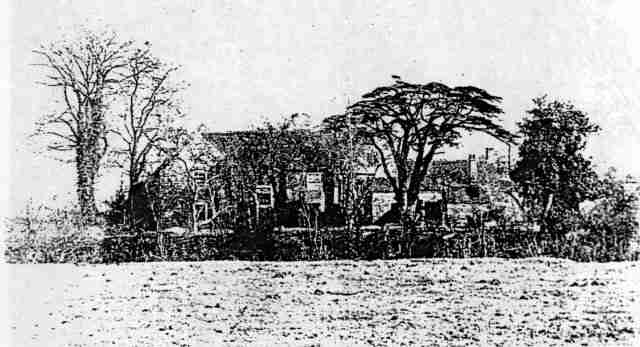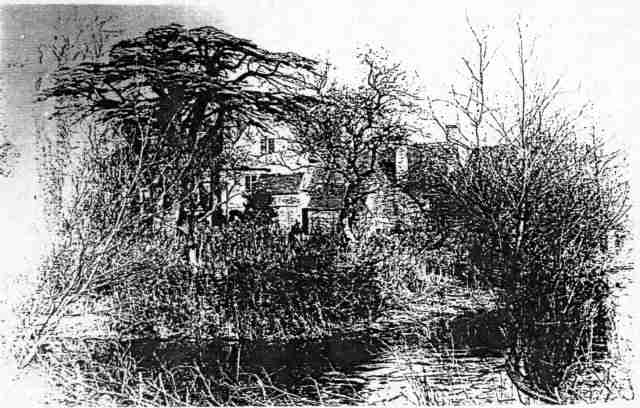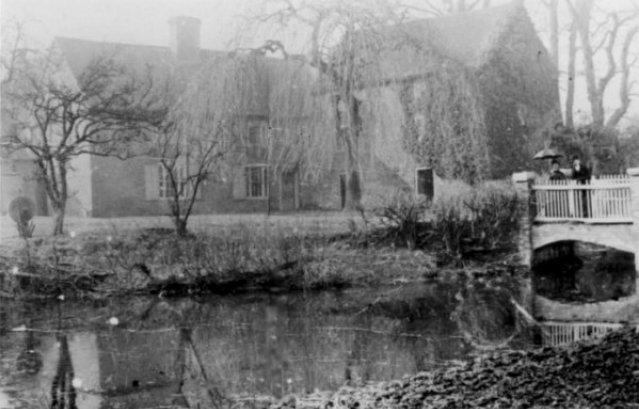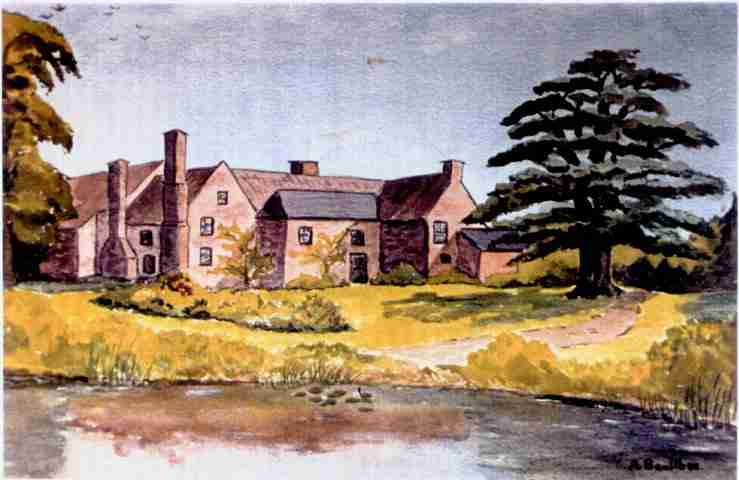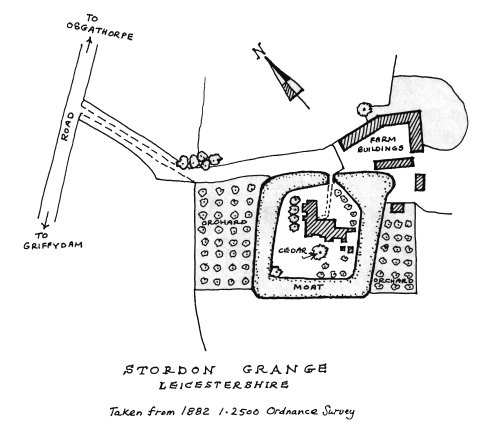 Let us take up TPB's statement that Stordon had a monastic origin. A monastic grange was essentially a farm for the collection of produce from lands owned by the monastery. There were two religious foundations nearby -- the Priory of Augustinian Canons at Breedon-on-the-Hill, three miles away in a straight line, and the Priory of Augustinian Canonesses at Grace Dieu, the remains of which are less than two miles from Stordon in a south-easterly direction. Both of these must have farmed in their near vicinities, however it is with Grace Dieu that Stordon must be connected. On January 24, 1493 Stoughton Grange was leased by John Zouch (of the Zouch family associated with the castles of Ashby-de-la-Zouch and Codnor) to Lady Margaret Zouch, Prioress of Grace Dieu. We believe that Stoughton was pronounced as though it was spelt Storton and that at some later time the second 't' changed to 'd'. (There is a village, Stoughton, south-east of Leicester, but this is too far away, we think, to have had a grange associated with Grace Dieu.)
Let us take up TPB's statement that Stordon had a monastic origin. A monastic grange was essentially a farm for the collection of produce from lands owned by the monastery. There were two religious foundations nearby -- the Priory of Augustinian Canons at Breedon-on-the-Hill, three miles away in a straight line, and the Priory of Augustinian Canonesses at Grace Dieu, the remains of which are less than two miles from Stordon in a south-easterly direction. Both of these must have farmed in their near vicinities, however it is with Grace Dieu that Stordon must be connected. On January 24, 1493 Stoughton Grange was leased by John Zouch (of the Zouch family associated with the castles of Ashby-de-la-Zouch and Codnor) to Lady Margaret Zouch, Prioress of Grace Dieu. We believe that Stoughton was pronounced as though it was spelt Storton and that at some later time the second 't' changed to 'd'. (There is a village, Stoughton, south-east of Leicester, but this is too far away, we think, to have had a grange associated with Grace Dieu.)
Having, as we believe, with the help of Dennis Heathcote, son of Emily Ann Heathcote, of another branch of the family, now been able to establish the mediaeval and monastic origin of Stordon, and we may recall TPB's remark about the ancient chimney, we come to the Beaumont connection. A Sir Thomas Beaumont had, by marriage, acquired Coleorton and founded the original Leicestershire branch of that family. In 1534 his grandson, John Beaumont, was one of the Royal Commissioners appointed to inspect Grace Dieu at the time of the Dissolution of the Monasteries. It was dissolved in 1538, John Beaumont acquired it, no doubt on very favourable terms and took up residence there. His son, Sir Francis, was the father of Francis Beaumont, the dramatist.
In 1696, the Beaumonts sold Grace Dieu, and removed to Coleorton. We do not know the date at which the 99-year lease of Stordon was taken up by Thomas Boultbee. It would seem likely that the lease commenced while Stordon was still owned by the Beaumonts, and possibly before the sale of Grace Dieu. His grandson Thomas died in 1785, and it would appear that the lease still had some years to run with his son Robert as tenant. Stordon must always have been a farm, as it still is, the house most likely over the years being altered and enlarged. (The Beaumont family seat in Leicestershire was Coleorton Hall, two miles south-west.)
TPB describes Stordon, its immediate surroundings of garden, moat, orchard, etc, and its interior as he found it in 1863. It actually stood in a flat-bottomed dip with a low hill behind, on the lower slopes of which still stand various farm buildings. The modern house, built in 1962, is between the dip and the road.
It is disappointing to have to record that there is now no trace at all that there had ever been a large house, with a moat, on the site. (Generally speaking, a moat in association with an old house was not always a serious defensive work, it was sometimes in the nature of a kind of status symbol.) We do not know when the moat, fed by springs from the hill, was formed but it was possibly mediaeval and might originally have been stocked with fish.
However, we are fortunate in that we do know what Stordon looked like in 1863 and 1891. A large rambling place showing all the signs of additions in a rather haphazard way -- parts with roof ridges of different heights, external chimney stacks in odd positions and single-storey parts tacked on, no doubt as necessity dictated. It is possible that in the time of Thomas and Jane Boultbee some of the latter excrescences did not exist, but with their large family it was even then a substantial property with two principal wings.
